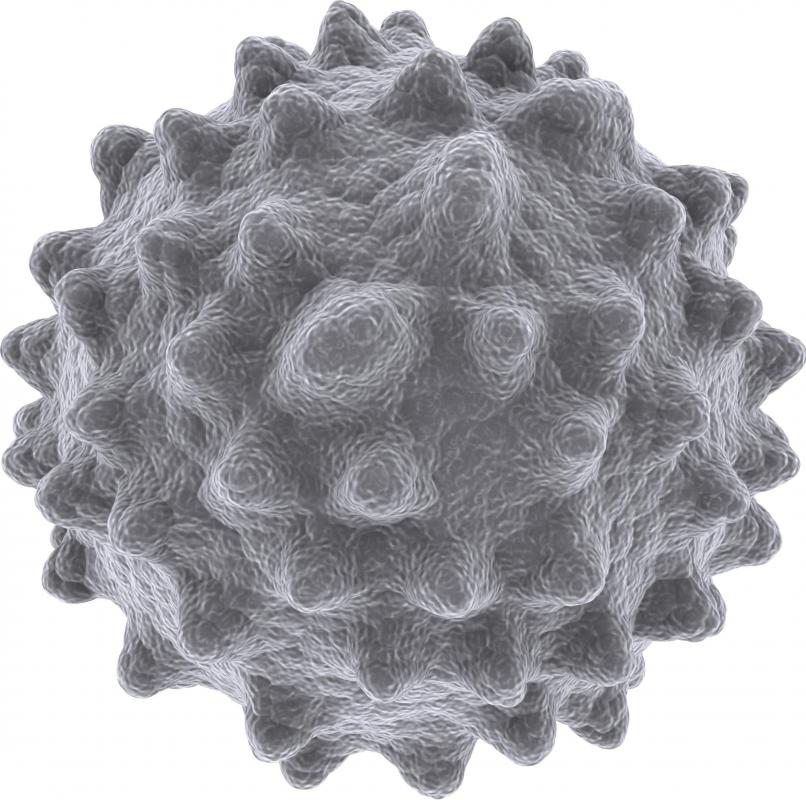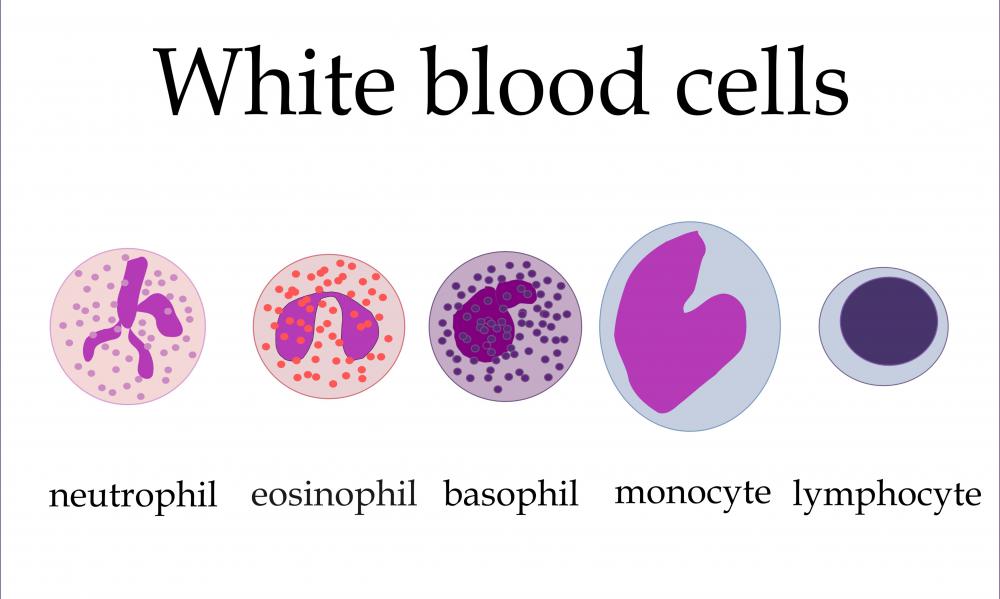At TheHealthBoard, we're committed to delivering accurate, trustworthy information. Our expert-authored content is rigorously fact-checked and sourced from credible authorities. Discover how we uphold the highest standards in providing you with reliable knowledge.
What is an Atypical Lymphocyte?
The presence of an atypical lymphocyte, otherwise referred to as a reactive lymphocyte or an atypical white blood cell, in the bloodstream is an indicator of antigen stimulation or immune system activation in the body. The atypical lymphocyte has more cytoplasm and thus grows larger in size than a normal lymphocyte as a reaction to infection, hormone production, radiation or other factors that influence the immune system. Some pathogens that influence the presence of this type of lymphocyte in the blood will also cause this altered cell to take on defining characteristics, such as changes to the shape of the nucleus and the quantity or color of the cytoplasm in the lymphocyte.
Although lymphocytes are always present in the bloodstream, interaction with immune system triggers is required to create an environment in which the abnormal lymphocyte is produced. The most common triggers for their production are viral illnesses. Some of the viruses that alter lymphocyte production in the body are the Epstein-Barr virus, cytomegalovirus, syphilis and hepatitis C. The Eppstein-Barr virus and cytomegalovirus atypical lymphocyte structures are often called Downey cells in honor of Hal Downey, who discovered them in 1923.

Higher white blood cell counts and the presence of atypical lymphocyte cell structures in the bloodstream are indicative of infections. The shape, color and size of the lymphocyte can offer lab pathologists the opportunity to identify the source of the infection. These defining characteristics are not always available, but some pathogens regularly cause abnormal lymphocytes to form specific characteristics. For this reason, lab pathologists must be well versed in these particular traits to help them in identifying the source of infections.

For example, infectious mononucleosis produces an atypical lymphocyte that has more cytoplasm than the usual white blood cells. In addition to being larger than typical lymphocytes, these cells also exhibit the presence of nucleoli. Crowding by the surrounding red blood cell is the reason why the lymphocytes produced by infectious mononucleosis often have a dented shape to their cytoplasm.

In addition to making changes in the structure of the body's lymphocytes, most viruses that can create an atypical lymphocyte are also transmitted through sex or the exchange of bodily fluids. These viruses, which have the ability to remain dormant for many years, are often first identified by the presence of atypical lymphocytes in the blood. The structures used to identify these viruses make disease control possible in the face of epidemics.
AS FEATURED ON:
AS FEATURED ON:















Discussion Comments
@starrynight - Misdiagnosis would be a very bad mistake to make. Most people think that lab results are completely definitive, so I can only imagine the fall out if a lab technician messed up on something like that.
I got to look at a few slides of atypical lymphocytes when I took Anatomy and Physiology. They were relatively easy to identify if you first knew what a lymphocyte was supposed to look like!
As the article said, the first clue is that an atypical lymphocyte is rather large. If you can identify that, then other irregularities will start jumping out at you.
A good friend of mine works at a diagnostic lab. She often has to look for atypical lymphocytes in her samples, among other atypical things!
As the article said, different atypical lymphocytes have different characteristics. It's very important to know the difference so you don't diagnose someone with syphilis when they really have Epstein-Barr!
Post your comments